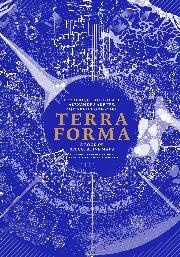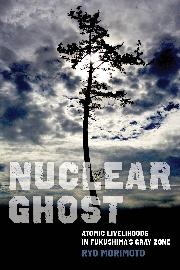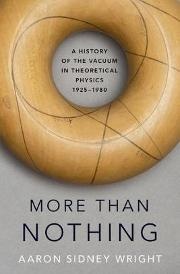Collaboration, Event Horizon Telescope. “
First Sagittarius A* Event Horizon Telescope Results. VIII. Physical Interpretation of the Polarized Ring.”
The Astrophysical Journal Letters 964, no. 2 (2024): L26.
Read on IOP.orgIn a companion paper, we present the first spatially resolved polarized image of Sagittarius A* on event horizon scales, captured using the Event Horizon Telescope, a global very long baseline interferometric array operating at a wavelength of 1.3 mm. Here we interpret this image using both simple analytic models and numerical general relativistic magnetohydrodynamic (GRMHD) simulations. The large spatially resolved linear polarization fraction (24%–28%, peaking at ∼40%) is the most stringent constraint on parameter space, disfavoring models that are too Faraday depolarized. Similar to our studies of M87*, polarimetric constraints reinforce a preference for GRMHD models with dynamically important magnetic fields. Although the spiral morphology of the polarization pattern is known to constrain the spin and inclination angle, the time-variable rotation measure (RM) of Sgr A* (equivalent to ≈46° ± 12° rotation at 228 GHz) limits its present utility as a constraint. If we attribute the RM to internal Faraday rotation, then the motion of accreting material is inferred to be counterclockwise, contrary to inferences based on historical polarized flares, and no model satisfies all polarimetric and total intensity constraints. On the other hand, if we attribute the mean RM to an external Faraday screen, then the motion of accreting material is inferred to be clockwise, and one model passes all applied total intensity and polarimetric constraints: a model with strong magnetic fields, a spin parameter of 0.94, and an inclination of 150°. We discuss how future 345 GHz and dynamical imaging will mitigate our present uncertainties and provide additional constraints on the black hole and its accretion flow.
 Full Article.pdf
Full Article.pdf Collaboration, Event Horizon Telescope. “
First Sagittarius A* Event Horizon Telescope Results. VII. Polarization of the Ring.”
The Astrophysical Journal LEtters 964, no. 2 (2024): L25.
Read on IOP.orgThe Event Horizon Telescope observed the horizon-scale synchrotron emission region around the Galactic center supermassive black hole, Sagittarius A* (Sgr A*), in 2017. These observations revealed a bright, thick ring morphology with a diameter of 51.8 ± 2.3 μas and modest azimuthal brightness asymmetry, consistent with the expected appearance of a black hole with mass M ≈ 4 × 106 M ⊙. From these observations, we present the first resolved linear and circular polarimetric images of Sgr A*. The linear polarization images demonstrate that the emission ring is highly polarized, exhibiting a prominent spiral electric vector polarization angle pattern with a peak fractional polarization of ∼40% in the western portion of the ring. The circular polarization images feature a modestly (∼5%–10%) polarized dipole structure along the emission ring, with negative circular polarization in the western region and positive circular polarization in the eastern region, although our methods exhibit stronger disagreement than for linear polarization. We analyze the data using multiple independent imaging and modeling methods, each of which is validated using a standardized suite of synthetic data sets. While the detailed spatial distribution of the linear polarization along the ring remains uncertain owing to the intrinsic variability of the source, the spiraling polarization structure is robust to methodological choices. The degree and orientation of the linear polarization provide stringent constraints for the black hole and its surrounding magnetic fields, which we discuss in an accompanying publication.
 Full Article.pdf
Full Article.pdf Galison, Peter, Chyld King, and Michael D. Johnson.
Light at the Edge of the Universe: The Black Hole Explorer. USA, 2024.
Watch on YouTube
Around the horizon of a black hole, an edge of the universe, light is captured, spun into orbit by the black hole’s powerful gravitational pull. Lying within the orange donut in the famous first image of a black hole, this “photon ring” would be a prize to measure—it would reveal the nature of spacetime itself, directly, near the horizon. Indeed, the shape of this pure ring of light tells everything about the black hole. With the stakes this high, a new collaboration—physicists, astronomers, engineers from around the world—has formed to loft a spacecraft that capture the photon ring. We are at the beginning of what is probably a ten-year effort—this is a film about the start of that adventure.
A film by Peter Galison, Michael Johnson, and Chyld King
et al, Event Horizon Telescope Collaboration. “
The persistent shadow of the supermassive black hole of M 87 - I. Observations, calibration, imaging, and analysis.”
Astronomy & Astrophysics 681 (2024): A79.
Read on AandA.orgIn April 2019, the Event Horizon Telescope (EHT) Collaboration reported the first-ever event-horizon-scale images of a black hole, resolving the central compact radio source in the giant elliptical galaxy M 87. These images reveal a ring with a southerly brightness distribution and a diameter of ∼42 μas, consistent with the predicted size and shape of a shadow produced by the gravitationally lensed emission around a supermassive black hole. These results were obtained as part of the April 2017 EHT observation campaign, using a global very long baseline interferometric radio array operating at a wavelength of 1.3 mm. Here, we present results based on the second EHT observing campaign, taking place in April 2018 with an improved array, wider frequency coverage, and increased bandwidth. In particular, the additional baselines provided by the Greenland telescope improved the coverage of the array. Multiyear EHT observations provide independent snapshots of the horizon-scale emission, allowing us to confirm the persistence, size, and shape of the black hole shadow, and constrain the intrinsic structural variability of the accretion flow. We have confirmed the presence of an asymmetric ring structure, brighter in the southwest, with a median diameter of as. The diameter of the 2018 ring is remarkably consistent with the diameter obtained from the previous 2017 observations. On the other hand, the position angle of the brightness asymmetry in 2018 is shifted by about 30° relative to 2017. The perennial persistence of the ring and its diameter robustly support the interpretation that the ring is formed by lensed emission surrounding a Kerr black hole with a mass ∼6.5 × 10<sup>9<sup/> <i>M<i/><sub>⊙<sub/>. The significant change in the ring brightness asymmetry implies a spin axis that is more consistent with the position angle of the large-scale jet.
 Full Article.pdf
Full Article.pdf 



















